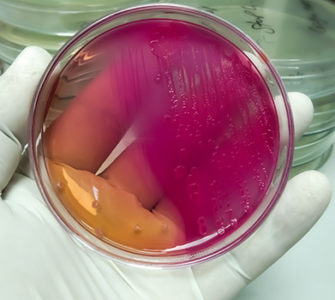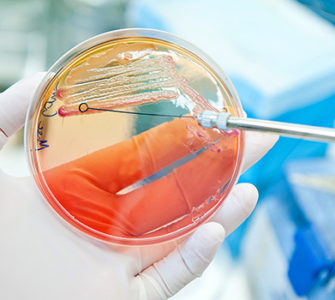FDA reports positive trends in antimicrobial resistance
US – The US Food and Drug Administration (FDA) released its National Antimicrobial Resistance Monitoring System (NARMS) 2011 Executive Report, showing mostly decreasing antimicrobial resistance trends.
The annual NARMS Executive Report focuses on resistance to antibiotics that are considered important in human medicine as well as multidrug resistance (described as resistance to three or more classes of antibiotics), according to the FDA.
Under the NARMS program, samples are collected from human, food producing animals and retail meat sources, and tested for certain bacteria, specifically non-typhoidal Salmonella, Campylobacter, E. coli andEnterococcus, to determine whether such bacteria are resistant to various antibiotics used in human and veterinary medicine.
Among the key findings:
- Eighty-five per cent of non-typhoidal Salmonella collected from humans, which includes Heidelberg, Hadar, Typhimurim, and Enteritidis serotypes, had no resistance to any of the antibiotics tested. (Non-typhoidal Salmonella refers to one of the 2,300 serotypes of Salmonella except for Typhi, Paratyphi A, Paratyphi B (tartrate negative) and Paratyphi C.)
- During its 16-year history, NARMS has found Salmonella resistance to ciprofloxacinto be very low (less than 0.5 per cent in humans, less than 3 per cent in retail meat, and less than 1 per cent in animals at slaughter). Ciprofloxacin, one of the most common antibiotics to treat Salmonella infections in humans, belongs to a group of drugs called fluoroquinolones which were ceased for use in poultry in 2005.
- Multi-drug resistance in Salmonella from humans and slaughtered chickens was the lowest since NARMS testing began.
- Resistance to erythromycin, the antibiotic of choice to treat Campylobacter infections, in Campylobacter jejuni (C. jejuni) has remained at less than 4 per cent in isolates obtained from humans, retail chicken and slaughtered chicken since testing began.
“NCC is pleased to see many positive trends in the data including a decrease in resistance in several foodborne pathogens and that first-line antibiotics remain effective in treating illnesses,” said Ashley Peterson, Ph.D., National Chicken Council vice president of scientific and regulatory affairs.
“Though this data is from 2011, this report provides a strong case that the continued judicious use of antibiotics by poultry and livestock producers is aiding in the reduction of resistance in various foodborne pathogens.
“Chicken producers, veterinarians and our animal health partners are committed to continue to preserve the effectiveness of antibiotics for both humans and animals and minimize the potential for bacteria to develop resistance.
“NCC supports FDA’s Guidance #213 that is phasing-out the growth-promoting uses of those antibiotics in livestock and poultry that are used in human medicine. We believe that this transition will continue to preserve the effectiveness of those antibiotics used to treat human illnesses.
“We also support FDA’s proposed Veterinary Feed Directive (VFD) that will ensure all antibiotics that are administered to food producing animals will be done so under the prescription of a licensed veterinarian. Both of these actions by FDA and full cooperation by chicken producers and animal health companies will help continue to drive the decrease in resistance in foodborne pathogens.
“One thing consumers should remember is that all pathogens potentially found on raw chicken, regardless of strain or resistance profile, will be fully destroyed by handling the product properly and cooking it to an internal temperature of 165°F.”
Article courtesy of ThePoultrySite.com
Posted on October 10, 2014

















